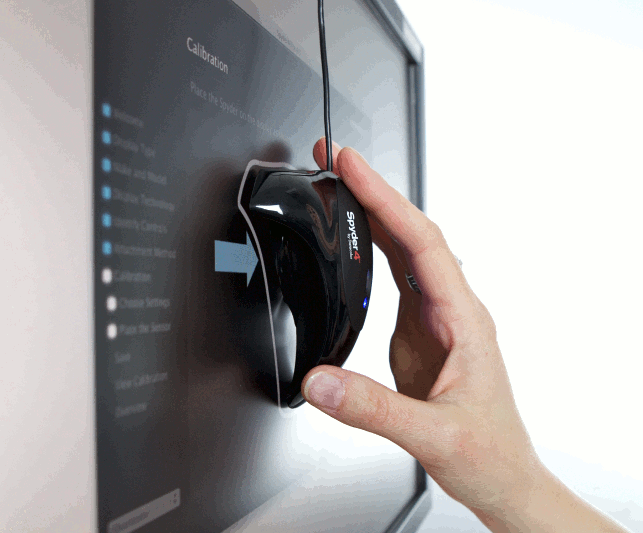Let’s talk colour. It’s perhaps one of the least discussed subjects in the world of 3D-based design and development systems. We’re all used to building 3D models, rendering and visualising them, but how many of us take the time to ensure that the colours that are represented on screen are accurate?

Fig 1. Datacolour’s Spyder 4
The fact is if you’re working with digital tools, for the most part, you’re likely to use the default materials and textures in your 3D design systems’ settings – unless there’s nothing there that matches your needs. Then it’s a case of punching in a new colour value, typically, from a preset list, and moving on.
When it comes to the visualisation process, I’d imagine that, unless you’re generating images for pre-marketing materials, the same applies. Default materials, tweaked to represent the colour of the final product’s material finishes will again be order of the day.
But how do you ensure that the colours you see on screen are as close to the intended reality of your product in work? What techniques and technologies exist to make the process more efficient?
This is where colour calibration plays a large part. The concept is as follows. Digital monitors (less so than with CRT monitors of old) aren’t particularly well calibrated at the factory settings. Most have some form of calibration built into the drivers or on-board settings, but these are often rudimentary at best.
These, combined with your monitor’s physical location and the lighting conditions, means that colours represented on screen can vary, in some cases dramatically, from the values that you’ve defined in your software.
There are also issues that pertain to the age of your monitor – while the LCD or LED monitors aren’t as bad as they used to be, the backlight in most of them will degrade and most certainly change with time.
So, how might we go about ensuring that the colours displayed on our screens match our design intent?
Hardware calibration
To assist with the calibration, there are a number of different ways to ensure that colour representation is accurate.
The most accurate method is to use a calibration device. These are available in a range of models and from a handful of vendors. Perhaps the best known are X-Rite and Datacolor.
Both vendors manufacture devices that measure the colour on screen (using supplied software and a hardware device) and adjust the monitor’s colour display to ensure accurate replication.
Whichever device you use, the workflow is pretty much the same. The device and software are installed, the device hung in the centre of the screen (as shown in figure 1) and the software works through a series of calibration routines.
Fig 2. X-Rite’s ColorMunki is around 50 quid
Once it’s done, the monitor is then ready to use. While the entry level products (such as X-rite’s ColourMunki products) rip through the process, the more expensive systems provide tools for tracking colour shifts, for ensuring that multiple monitor set-ups match and the like.
Using one of Datacolour’s Spyder products I’ve been tracking how my iiyama display has changed (calibration is a monthly routine for me) and how the values shift with the lighting conditions outside of my office (ambient light can play a large part in the whole process). It’s become clear that things change over the course of a year.
Built in calibration
Some monitors (such as the Eizo ColourEdge and Samsung’s Series 9 models) have calibration devices built directly into the bezel.
While these are costly models, they work in the same way as standalone devices except it’s much more automated.
The ICC profile
The end result of almost every process is an ICC file.
This is an internationally standardised way of communicating a device’s colour correction requirements – whether in terms of input (for scanners and spectrometers for measuring colour) or output devices (for a printer or a display, or anything in between).
Because of the standardised nature of the ICC profile these can be interchanged between hardware and software so everything should work on the same basis.
For example, an ICC profile from a display can then be reused in applications such as Photoshop to ensure that the two bits of kit work together and display colours correctly. The same is true between a scanner and a display.
What’s also interesting is that there’s a movement to integrate the same methodology into 3D software applications.
Systems-based control
Of course, accurate colour representation also depends a great deal on the lighting conditions you define in your visualisation system.
The use of HDR image-based lighting in not only specialised applications (such as KeyShot), but also in workhorse CAD-integrated renderers, means that this is less of an issue – but there are issues none the less.
Again, the ICC profile is able to help here in some instances. In their most recent releases, for example, both Luxion’s KeyShot and Chaos Group’s VRAY both gained ICC profile support.
In conclusion
This level of detail in colour representation isn’t going to be for everyone. For some, the rendering process doesn’t need to be that accurate and often, these things can be adjusted by eye-balling it.
That said, if you’re creating pre-manufacture marketing materials, doing high resolution display or visualisation for your clients (particularly if they’re picky), then adding that extra layer of accuracy can only benefit.
Of course, the investment in a measurement device is an additional cost, but when you consider that the ColorMunki is available for 60 quid or so, with the professional options for DataColor’s Spyder products starting at around the 100 pound mark, it’s not a massive investment especially as these devices can be used across all of your office’s displays.
As we get into an era where the general public are more used to viewing and interacting with 3D rendered geometry, they will naturally become more discerning and less tolerant of inaccuracy in colour representation.
Forewarned is forearmed, folks.
Al Dean looks at how colour can be accurately represented
Default







